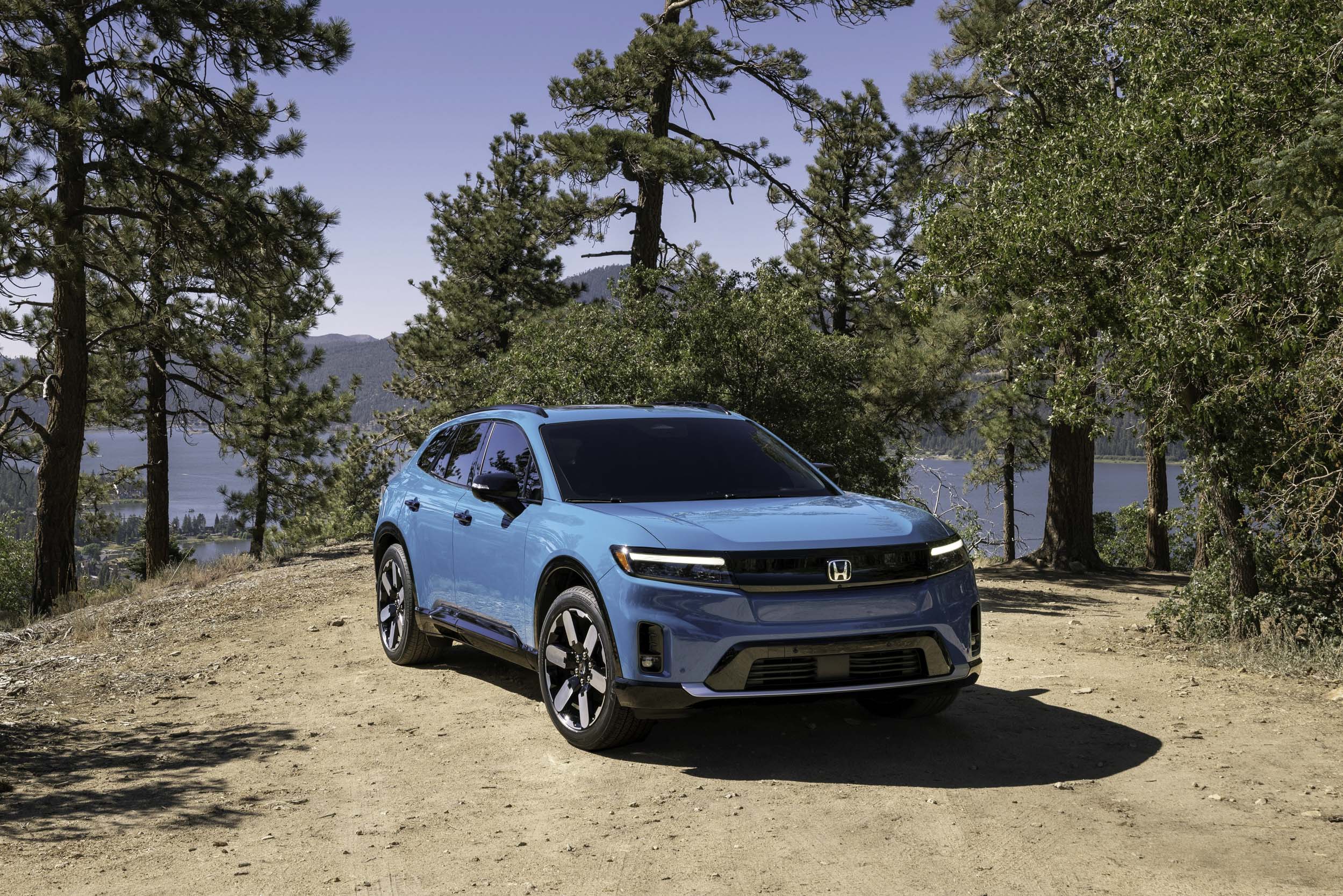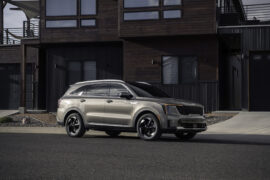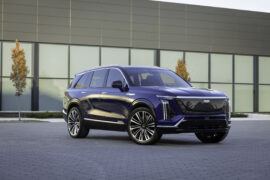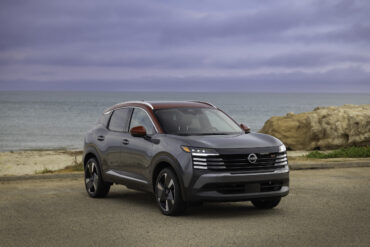Honda’s 2024 Prologue is a spacious, two-row electric SUV with room for five passengers. Sized larger than the CR-V and comparable to the Honda Passport, it’s designed to take on rivals like the Tesla Model Y, VW ID.4, Kia EV9, and Nissan Ariya. Sharing GM’s Ultium battery platform with the Chevy Equinox, it brings competitive tech to the EV market.
DESIGN
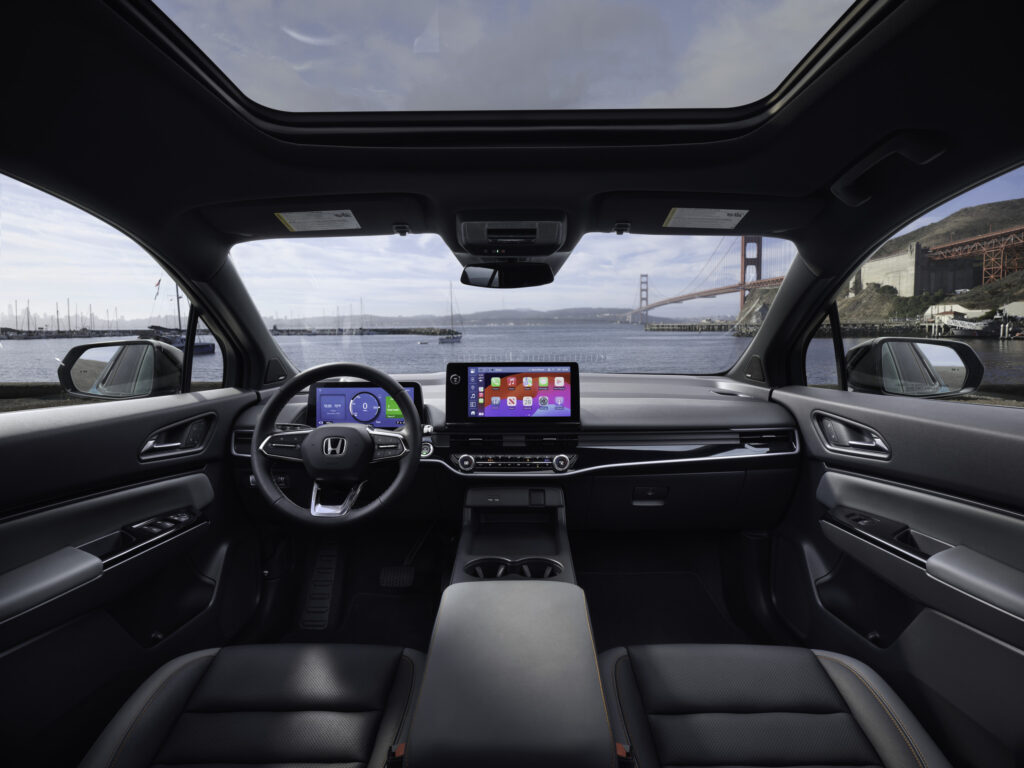
Honda’s Prologue arrives with a refined, understated style. Its exterior is harmonious and balanced, perhaps even more so than the interior. With well-proportioned lines, the side profile and front and rear detailing give it a clean, grounded appearance. Our test model, finished in Snowfall Pearl, added an extra touch of sleekness to its look.
Built on the same platform as the Chevrolet Blazer, the Prologue still stands apart in design. While the Blazer EV embraces bold lines and dramatic lighting, the Prologue takes a softer approach. Its gentle curves and smooth front end incorporate safety sensors for a calm, modern look that contrasts with the Blazer’s edgier style.
Honda handled the design elements above the platform, including the dash and seating, creating a “neo-rugged” look with subtle black accents. This touch hints at its SUV capabilities. Although not built for hardcore off-roading, its wagon-like shape from certain angles, paired with high-set rear LEDs and the Honda script, nods to the European-inspired Honda E. The 21-inch wheels on the Elite trim further enhance its presence.
Inside, the Prologue’s design emphasizes practicality. The center console includes useful features like space for a phone, ample cupholders, lower storage, and an upper tray. Some areas around the climate vents could benefit from extra trim to achieve a polished finish. While pre-production models showed minor material mismatches, the physical climate controls offer a refreshing alternative to fully digital setups.
PERFORMANCE
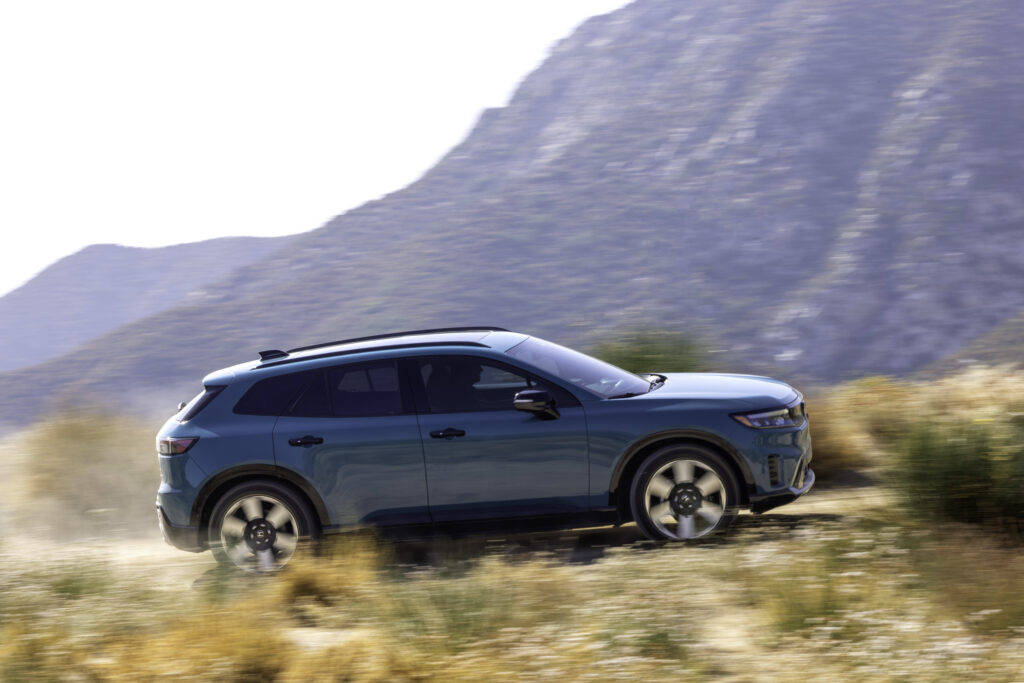
Built with families and occasional adventurers in mind, the 2024 Prologue emphasizes utility and comfort over high-powered thrills. It may not suit performance enthusiasts, but it offers just the right amount of liveliness for everyday driving. With a smooth ride, responsive handling, and balanced braking, it’s tuned for comfort and ease of use, making it a great choice for regular commutes and leisurely trips.
Sitting on GM’s Ultium EV platform, the Prologue packs an 85-kWh battery beneath the floor. Single-motor, front-wheel-drive versions generate 212 hp and 236 lb-ft of torque, while all-wheel-drive models add a second motor, delivering a combined 288 hp and 333 lb-ft. Our AWD test model showcased impressive grip and a smooth power distribution that enhances driving confidence.
Adjustable regenerative braking offers two modes, selectable via paddles on the steering wheel. Drivers can choose between a standard setup or a more assertive one-pedal drive mode. On the Elite trim we tested, there’s also a Sport mode that enhances steering feedback and braking response, with an added sound effect mimicking engine noise. Turning off this audio layer, however, provides a more authentic EV driving experience.
Weighing over 5,000 pounds in AWD, the Prologue’s heft is noticeable, though it rides smoothly thanks to its multi-link suspension and stabilizer bars on both axles. Body lean appears in sharper turns, and the steering feels a bit extended, yet it holds steady on highways, delivering a calm and balanced drive that’s perfect for longer journeys.
Two configurations are offered: single-motor front-wheel drive and dual-motor all-wheel drive, available in trims like EX, Touring, and Elite. Ground clearance ranges from 7.9 inches in FWD models to 8.1 inches in AWD, providing enough lift for light trails. However, with no off-road mode or extra underbody protection, it’s clear the Prologue is designed more for pavement than rugged terrain.
VERDICT
Priced at an MSRP of $57,900, our test vehicle—the 2024 Honda Prologue AWD Elite—comes with a total sticker price of $59,750.
Competition
Honda’s Prologue enters a competitive field, going up against popular models like the Tesla Model Y, while offering a larger footprint than many similar EVs. Closest in size, the Chevy Blazer EV brings a sporty exterior, though it falls short in terms of infotainment tech.
Kia’s EV9 also stands out; despite being only slightly larger on the outside, it accommodates a third-row seat and has mild off-road capability. Volkswagen’s ID.4 provides ample interior space and a smooth ride, but its user interface could benefit from upgrades.
For those drawn to distinct design and high efficiency, Hyundai’s Ioniq 5 excels in both quick charging and long-distance travel. Meanwhile, Nissan’s Ariya offers top-notch quietness and ride quality, with a simple, intuitive interface that outshines some of its peers.

